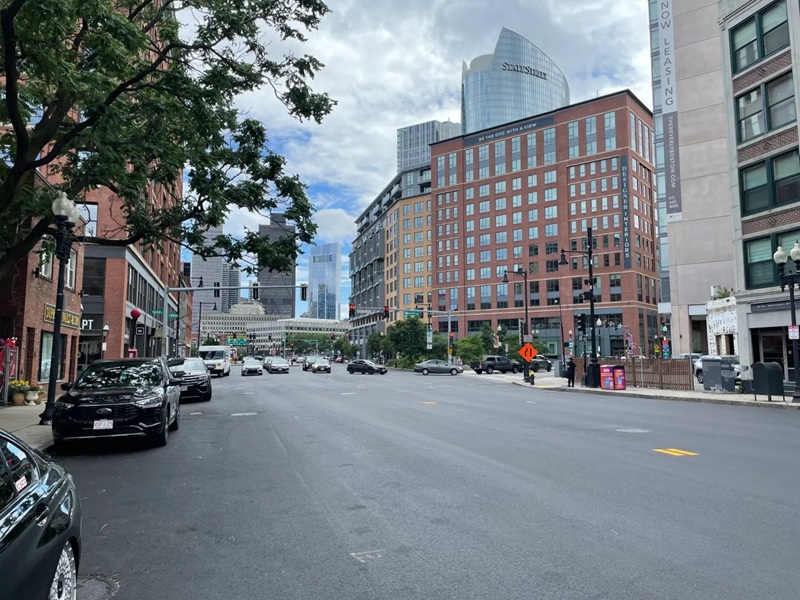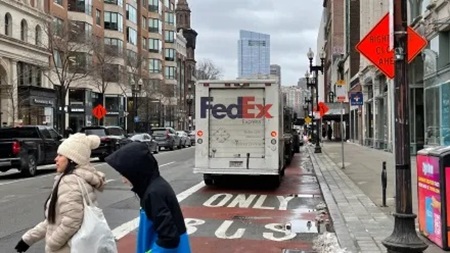Another Bus Lane Bites the Dust: Wu Administration Forces Chelsea, Charlestown Transit Riders to Wait In More Traffic

The change comes just weeks before the MBTA rolls out a new bus lane enforcement system, which is expected to improve bus service considerably – at least on the dwindling number of streets where dedicated bus lanes still exist.
July 8, 2025
Mayor Wu’s administration has removed a dedicated bus lane from North Washington Street between Haymarket and the North Washington Street Bridge, a decision that will force roughly 15,000 daily bus riders – the vast majority of whom are lower-income and Hispanic riders – to wait in more traffic.
Last week, the City of Boston repaved North Washington Street between Haymarket and the new Bill Russell Bridge.
The paving project removed all lane markings, but a city spokesperson told StreetsblogMASS on Tuesday that the city does not plan to restore the northbound dedicated bus lane, which serves MBTA bus routes 92, 93, and the 111.
The city’s decision was made without any public hearings.
StreetsblogMASS also asked City of Boston officials to provide the data they used to support their decision, but city officials declined to honor that request.
The inbound (southbound) bus lane will be restored, the City Hall spokesperson said.
Decision will disproportionately affect low-income, Hispanic bus riders
The North Washington Street bus lanes benefit about 14,900 daily bus riders, two-thirds of whom ride the 111 to Chelsea, one of the MBTA’s busiest bus routes.
63 percent of the 111’s riders identify as Hispanic or Latino, and 90 percent of its riders are low-income, according to MBTA rider surveys.
The City of Boston’s decision “doesn’t just hurt Chelsea,” said Mónica Elias-Orellana, the Director of Health Equity and Mobility for Chelsea-based GreenRoots. “It affects riders from Everett, Charlestown, Revere, East Boston, and neighborhoods across Boston who rely on fast, reliable bus service to get to work, school, and medical care.”
“This is a missed opportunity to support equity, reduce emissions, and build a better service for the people who need it most,” added Elias-Orellana.

“There is no indication of meaningful engagement having been made, if this decision has indeed already been made,” said Reggie Ramos, executive director of Transportation for Massachusetts. “This is highly problematic, and quite frankly, inequitable.”
More room for traffic
This is the third – and by far the most heavily-used – bus lane that the Wu administration has removed in the past year.
Last September, Mayor Wu removed a dedicated transit lane for the 7 bus through the Seaport neighborhood following complaints from powerful Seaport developers and quasi-public agencies like Massport and the Mass. Convention Center Authority, which rely heavily on parking fees.And in February, Wu’s administration removed a short segment of dedicated bus lane on Boylston Street in Back Bay
